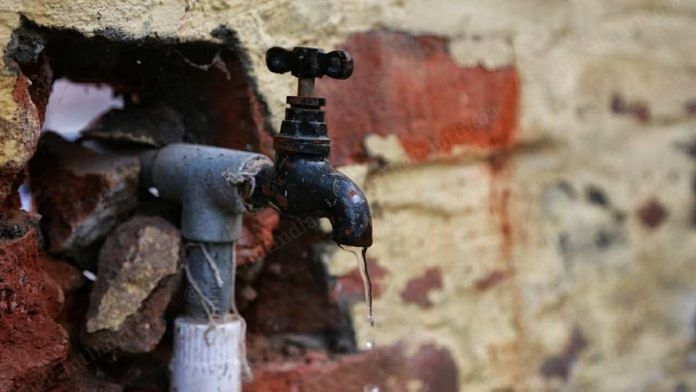New Delhi: Among the eight union territories, New Delhi has secured the second spot in achieving the 16 sustainable development goals set by the NITI Aayog. According to the commission’s latest annual report, the national capital has scored an average score of 68, up from 60 last year. In comparison, the national average is 66.
Delhi has led the way in eradicating poverty (81), good health and well being (90), affordable and clean energy (100) and life on land (81). However, it has performed poorly — securing the last spot among the UTs — under the goals of gender equality (33), responsible consumption and production (50) and clean water and sanitation (61), the report noted.
Gender equality is calculated based on nine metrics including sex ratio at birth, rate of crimes against women per 1,00,000 female population, ratio of female-to-male average wage/salary earnings received among regular wage/ salaried employees, per lakh women who have experienced cruelty/physical violence by husband or his relatives during the year, percentage of elected women over total seats in the state/UT legislative assembly, ratio of female-to-male labour force participation rate (LFPR) (15-59 years) and more.
Its performance in industry, innovation and infrastructure has come down significantly from 100 last year to 60. The national average score stands at 55. Former Delhi chief secretary Omesh Saigal, however, believes this is good news.
“If Delhi has done badly on industry, that’s good. That is what is needed. We need to control pollution. Only small industries that can help generate employment. As for roads, it’s there for all to see. Infrastructure hasn’t improved in any area,” he told ThePrint.
This goal is measured using the percentage of targeted habitations connected by all-weather roads under the Pradhan Mantri Gram Sadak Yojana, manufacturing employment, number of mobile connections and internet subscribers.
Also read: State of the states: NITI report shows who’s rising, who’s lagging and the gap in between
Delhi shines in education sector
The Aam Aadmi Party government in the national capital has done a tangible amount of work in the education sector. Government schools did better than private schools in Delhi for a fifth straight year in 2020 in terms of their pass percentage.
“One of the key reasons for AAP’s back-to-back landslide victory in 2020 assembly elections was its splendid performance in improving the government school system,” according to Niranjan Sahoo, a senior fellow with the Governance and Politics Initiative of the Observer Research Foundation or ORF.
Among all states and UTs, Delhi has secured the second highest score in not just ‘life on land’ but also ‘quality education’ — at 75, up from 64 last year. This goal is measured on 11 metrics, some of which are pupil-teacher ratio (PTR) at secondary level (class 9-10), adjusted net enrolment ratio (ANER) in elementary education (class 1-8), average annual dropout rate at secondary level (class 9-10), gender parity index (GPI) for higher education (18-23 years) and more.
However, Saigal said the national capital could have done better. “Considering that Delhi is a city, it doesn’t have any indegenous population, it has a lot of migrants. But I would have expected the national capital to perform much better. Government schools have also made remarkable progress. A jump of 64 to 75 may seem remarkable but Dehli could have done better.”
Also read: India is less poor & more fed, but nearly as unequal as last year, Niti Aayog report shows
J&K, the newest UT, fared poorly on eight indicators
Jammu and Kashmir (J&K) — the most recent entrant to the list of UTs in India — has done worse than the national average in eight of the SDGs set by the NITI Aayog. These include good health and well being (70), quality education (49), gender equality (46), decent work and economic growth (47), life on land (52), sustainable communities (57), industry and infrastructure (42) and reduced inequalities (65).
The UT has scored well in responsible consumption and production (93) and affordable and clean energy (100). However, it is SDG 16 — Peace, justice and strong institutions — where J&K’s score has come up from 69 last year to 75 this year that catches one’s attention.
“If you read today’s papers, the courts have lambasted the police for carrying out shoddy investigation under UAPA. How can you talk about justice when even habeas corpus petitions were not entertained by the courts? Preposterous dossiers were made to contain mainstream political leaders — is that a metric to judge peace, justice?” Khalid Shah, an associate fellow at ORF, told ThePrint.
Pointing out how the region has been under the Union government for the past almost three years, he added: “Several governments in the past were criticised for not bringing development to the region, but it has done poorly than the national average on a lot of goals despite being under the Centre’s rule.”
Also read: Big surprise: UP, Bihar do well on clean energy index — electricity in all homes, LPG in most



